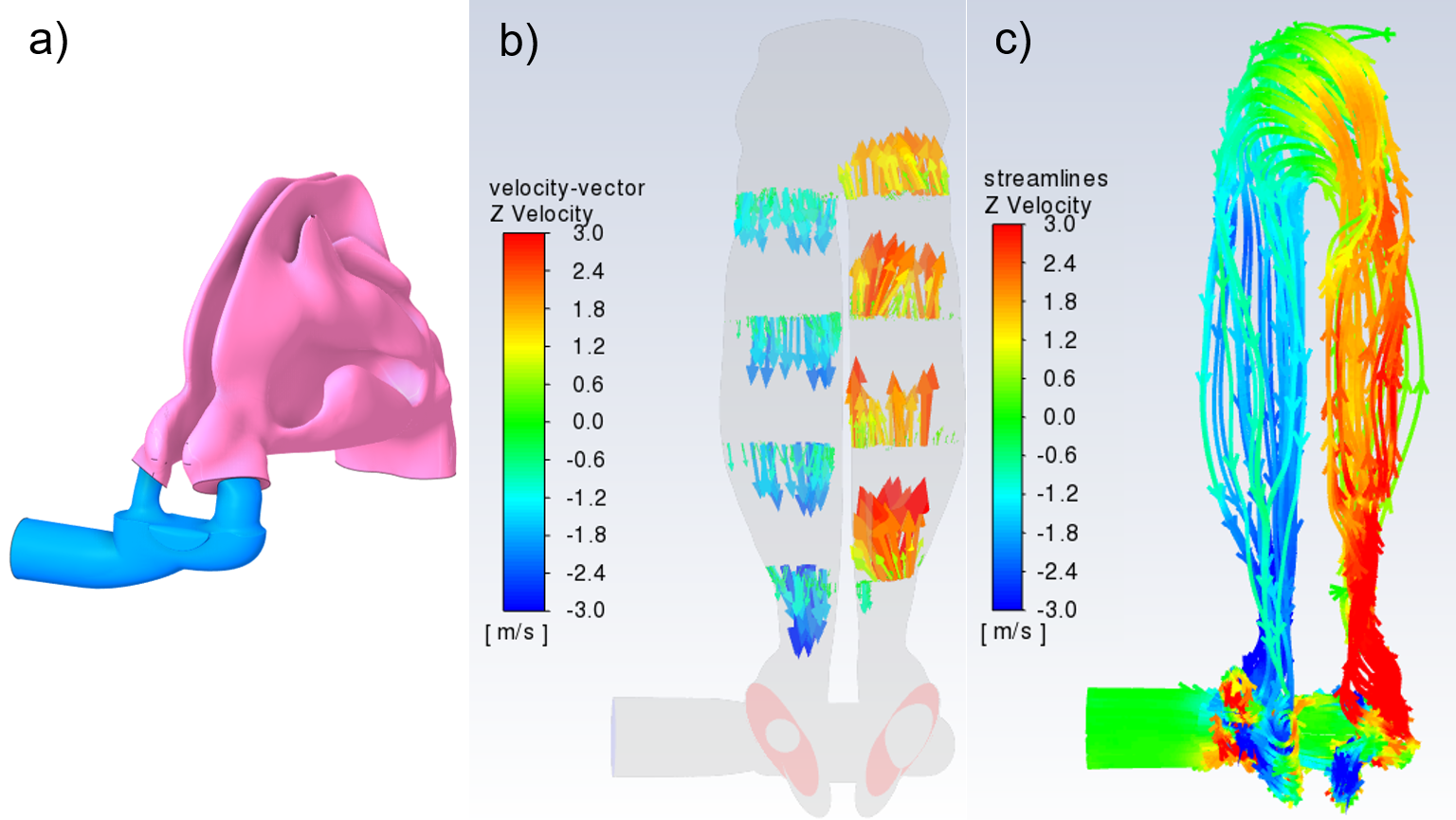Abstract
Nasal high flow (NHF) is an established form of non-invasive respiratory support. Asymmetrical nasal cannula interface leads to flow asymmetry in the upper airways that accelerates clearance of expired gas in the anatomical dead space and reduces rebreathing.áThe purpose of the study was to investigate in silico the mechanism of the improved clearance.
The air flow in an adult upper airway was modelled using Ansys Fluent (Ansys, USA). The domain included the nasopharynx and the medium size asymmetrical interface (Optiflow Duet, Fisher & Paykel Healthcare, New Zealand) that occluded 79.8% (left) and 52.4% (right) of the nares. The end of expiration was modelled with NHF 30áL/min.
At the end of expiration, the top of the nasal cavities had a pressure difference of 11.2áPa with higher pressure in the cavity with the larger prong. This pressure difference resulted in the reverse flow through the choana and the nasal cavity occluded by the smaller prong (Figure 1). This flow was the highest in the lower half of the cavity, with a velocity in the reverse direction reaching 4.7ám/s.

Figure 1: (a) Asymmetrical NHF interface and upper airway; (b) vectors and (c) streamlines indicating the reverse flow.
The modelling revealed the differential pressure between the more and less occluded nares and the reverse flow in the nasal cavity with the smaller prong. This may lead to the improved purging of the expired gas and dead space clearance.